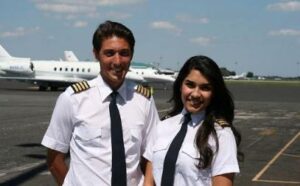A Comprehensive Guide to Pilot Courses in India

For those dreaming of a career in aviation, enrolling in the right pilot courses in India is the first step. With the growing demand for pilots due to the expansion of the aviation industry, various pilot training programs are available to help you achieve your goal. This guide provides a detailed overview of the different pilot courses offered in India, their structure, and how to choose the right one for your career.
- Types of Pilot Courses in India
Aspiring pilots in India can choose from several types of pilot courses, each catering to different aviation career goals:
* Private Pilot License (PPL): This is a basic course for those who want to fly for personal or recreational purposes. The PPL course allows you to fly small aircraft but does not qualify you for commercial flying.
* Commercial Pilot License (CPL): One of the most sought-after pilot courses in India, the CPL program is designed for those who wish to pursue a career as a professional commercial pilot. The course includes extensive theoretical training and a minimum of 200 flying hours.
* Instrument Rating (IR): This is an advanced course for pilots who want to improve their skills in flying under challenging weather conditions. The IR course enables pilots to operate aircraft using only instruments, without relying on visual references.
* Multi-Engine Rating (MER): Pilots looking to expand their qualifications can opt for a multi-engine rating, which allows them to fly aircraft with more than one engine. This is essential for pilots who wish to work for commercial airlines.
- Key Components of Pilot Courses in India
Each of the pilot courses in India consists of two main components:
* Ground School: This part of the course covers the theoretical aspects of flying, such as navigation, aviation meteorology, aircraft systems, and air law. Theoretical knowledge is critical for passing the Directorate General of Civil Aviation DGCA exam syllabus, which are mandatory for obtaining a license.
* Flying Hours: Practical flying experience is a crucial part of all pilot courses. Students spend time flying under the supervision of experienced instructors to gain the necessary skills and confidence. The number of flying hours required varies depending on the course (e.g., 40 hours for PPL and 200 hours for CPL).
- Eligibility Criteria for Pilot Courses in India
To enroll in pilot courses in India, candidates must meet certain eligibility criteria, including:
* Educational Qualification: You must have completed 10+2 with Physics and Mathematics as compulsory subjects. If you don’t have these subjects, you can take equivalent exams through open schooling.
* Age: The minimum age requirement for starting a PPL course is 17 years, while for CPL, it is 18 years.
* Medical Fitness: Aspiring pilots must pass a Class 1 medical examination conducted by a DGCA-approved medical examiner to ensure they meet the physical and mental health requirements for flying.
- Duration and Cost of Pilot Courses in India
The duration of pilot courses in India varies based on the license type:
* PPL: Typically takes 6-12 months to complete.
* CPL: Takes 18-24 months, depending on the availability of flying hours and how quickly students pass their exams.
The cost of pilot training can range from ₹40 lakhs to ₹45 lakhs for a Commercial Pilot License, while a Private Pilot License costs between ₹10 lakhs and ₹15 lakhs.
- Career Prospects After Completing Pilot Courses in India
Once you complete the required pilot courses in India, the next step is to secure a job in the aviation industry. Graduates with a CPL can apply for positions with domestic and international airlines, charter services, or even explore opportunities in cargo and private aviation. The aviation sector in India is booming, which means there are ample opportunities for newly trained pilots.
For more details on the available pilot courses in India and guidance on choosing the right program for you, visit ThePilot.in.
